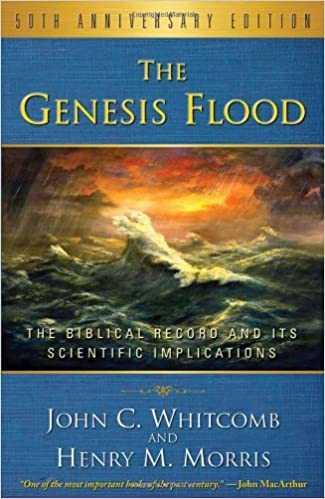A Brief Book Summary from Books At a Glance
by Fred G. Zaspel
Editor’s Note: When it came to our attention that we had not yet featured this landmark book we immediately determined to correct that oversight. If for no other reason but its massive influence over the past sixty years it is a book that must be reckoned with by all sides of the flood / creation-evolution / age of the earth discussions. The authors’ arguments in support of the universality of the Noahic flood are especially compelling.
Because of the book’s scope and detail adequate summary is nearly impossible, particularly for the chapters that explore extensive scientific data. We decided that a summary of the chapters of most popular interest, along with a detailed contents-outline of the book, would serve our purpose. We hope you enjoy!
Table of Contents
Chapter I. Basic Arguments for a Universal Flood
Chapter II. Basic Arguments Against an Anthropologically Universal Flood
Chapter III. Basic Non-Geological Arguments Against a Universal Flood
Chapter IV. Uniformitarianism and the Flood: A Study of Attempted Harmonizations
Chapter V. Modern Geology and the Deluge
Chapter VI. A Scriptural Framework for Historical Geology
Chapter VII. Problems in Biblical Geology
Appendix I. Paleontology and the Edenic Curse
Appendix II. Genesis 11 and the Date of the Flood
Summary
Note that the summaries below, for chapters 1-4, are by the authors themselves, reproduced here from The Genesis Flood with the kind permission of P&R Publishers, P.O. Box 817, Phillipsburg, NJ 08865, www.prpbooks.com.
Chapter 1: Basic Arguments for a Universal Flood (pp.33-35)
In this chapter we have attempted to establish the geographical universality of the Flood on the basis of seven major Biblical arguments: (1) the Bible says that the waters of the Flood covered the highest mountains to a depth sufficient for the Ark to float over them; (2) the Bible also informs us that this situation prevailed for a period of five months and that an additional seven months were required for the waters to subside sufficiently for Noah to disembark in the mountains of Ararat; ( 3) the expression “fountains of the great deep were broken up” points unmistakably to vast geological disturbances that are incompatible with the local-Flood concept, especially when these disturbances are said to have continued for five months; (4) the construction of the Ark with a capacity of at least 1,400,000 cubic feet, merely for the purpose of carrying eight people and a few animals through a local inundation is utterly inconceivable; (5) if the Flood had been limited in extent, there would have been no need for an ark at all, for there would have been plenty of time for Noah’s family to escape from the danger-area, to say nothing of the birds and beasts; (6) Peter’s use of the Flood as a basis for refuting uniformitarian skeptics in the last days would have been pointless if the Flood had been merely a local one, especially when we consider the cosmic setting into which he placed that cataclysm (II Pet. 3:3-7), and (7) a widely distributed human race could not have been destroyed by a local Flood.
In support of our seventh argument, we presented four Biblical reasons for the necessity of a total destruction of humanity in the days of Noah: (1) since the stated purpose of the Flood was the punishment of a sinful race, such a purpose could not have been accomplished if only a part of humanity had been affected; (2) the fact that the Flood destroyed the rest of mankind is greatly strengthened by repeated statements in Genesis, I Peter, and II Peter, to the effect that only Noah and his family were spared; (3) the Lord Jesus Christ clearly stated that all men were destroyed by the Flood (Luke 17:26-30), and ( 4) the covenant which God made with Noah after the Flood becomes meaningless if only a part of the human race had been involved. . . .
[To continue reading this summary, please see below....]The remainder of this article is premium content. Become a member to continue reading.
Already have an account? Sign In
